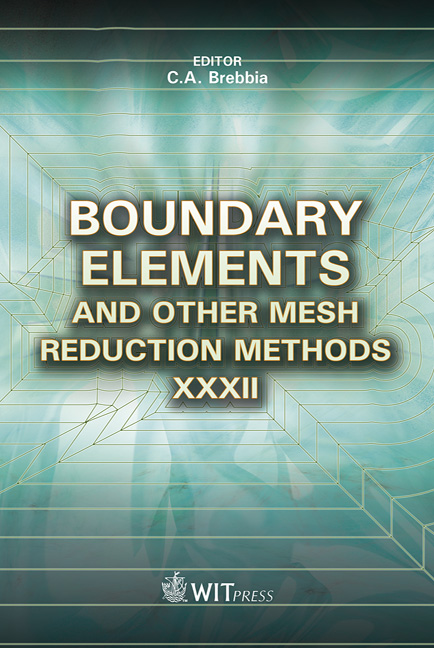A Simple Implementation Of The Dual Boundary Element Method Using The Tangential Differential Operator For Plane Problems
Price
Free (open access)
Transaction
Volume
50
Pages
10
Page Range
75 - 84
Published
2010
Size
2,954 kb
Paper DOI
10.2495/BE100071
Copyright
WIT Press
Author(s)
L. Palermo, P. C. Gonçalves & L. G. Figueiredo
Abstract
Plane problems of linear fracture mechanics were solved with the dual boundary element method (DBEM) using the tangential differential operator (TDO) in traction boundary integral equation (BIE). The numerical implementation employed same shape functions for conformal and non-conformal interpolations with nodal parameters fixed at the ends of elements. Different collocation point positions were used in crack surfaces according to continuity requirements related to each BIE type employed. The aim of this paper is presenting a simple implementation for fracture analysis. Results obtained in the literature for stress intensity factors were included to show the accuracy of the formulation. Keywords: tangential differential operator, dual boundary element method, stress intensity factor. 1 Introduction This study began when the implementation presented in [1] was revisited in [2] with purpose to apply conformal interpolations along crack surfaces. Nonconformal interpolations along crack surfaces were used in [1] with quadratic elements and collocation points positioned at element nodes. The problems solved in [1] could be analyzed in [2] using conformal interpolations along crack surfaces with collocations points shifted to the interior of elements. The obtained results in [2] with quadratic or linear elements had a good agreement with those presented in [1] for internal positions (ξ') of collocation points equal ±0.67 in the range (-1, 1). Furthermore, results were not significantly changed if conformal or
Keywords
tangential differential operator, dual boundary element method, stress intensity factor





